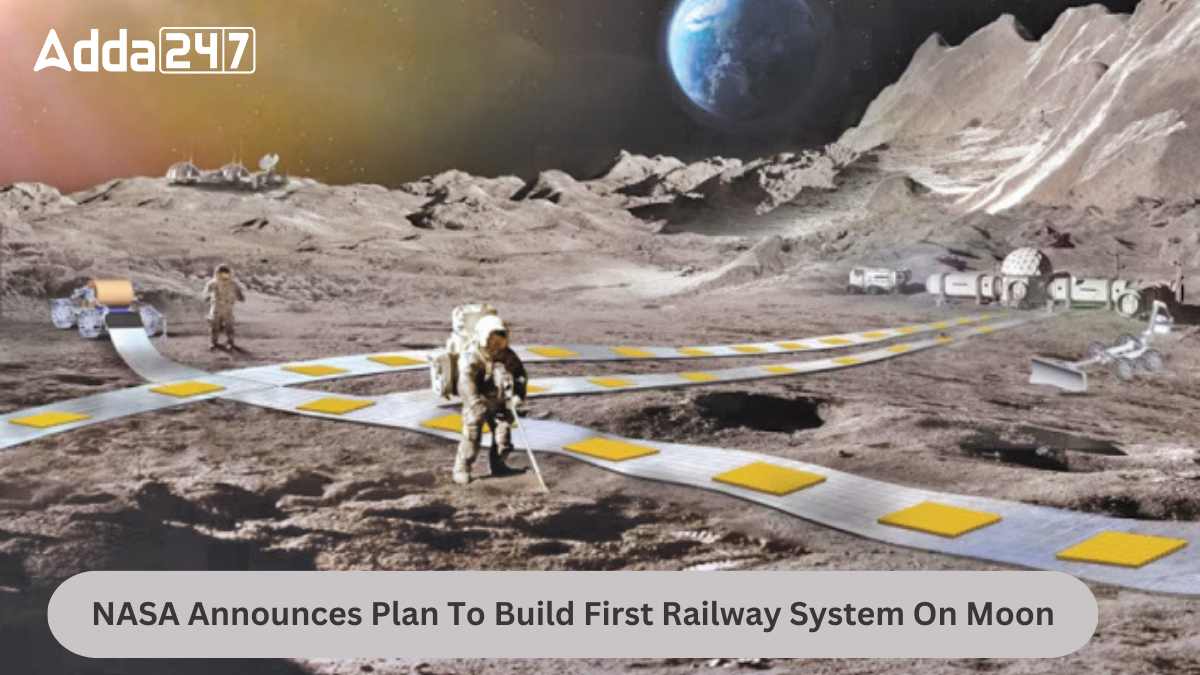NASA has unveiled its ambitious plan to construct the first lunar railway system, known as FLOAT (Flexible Levitation on a Track), designed to revolutionize payload transport on the Moon. This innovative system aims to provide reliable, autonomous, and efficient transportation essential for the daily operations of a sustainable lunar base, aligning with NASA’s Moon to Mars initiative and mission concepts like the Robotic Lunar Surface Operations 2 (RLSO2).
An Overview of FLOAT System
The FLOAT system utilizes unpowered magnetic robots that levitate over a 3-layer flexible film track. These tracks consist of a graphite layer for passive floating using diamagnetic levitation, a flex-circuit layer for generating electromagnetic thrust to propel robots along the tracks, and an optional thin-film solar panel layer for power generation when exposed to sunlight. By eliminating moving parts, FLOAT robots minimize lunar dust abrasion and wear, providing a durable and long-lasting transportation solution.
Key Features of FLOAT
Here are the key features of Flexible Levitation on a Track System (FLOAT System):
- Magnetic Levitation Technology: FLOAT will utilize magnetic robots levitating over a specially designed three-layer film track, minimizing abrasion from lunar dust.
- Payload Capacity: The transport system is projected to move at approximately 1.61 kilometers per hour, with the capability to transport up to 100 tons of material daily to and from NASA’s future lunar base.
- Targeted Applications: FLOAT will primarily serve as a transportation service for areas where astronauts are active, transporting lunar soil and other materials across the lunar surface. Additionally, it will facilitate the transportation of larger loads of materials and equipment between spacecraft landing sites and base locations.
Purpose and Functionality of FLOAT
FLOAT is envisioned as a robotic transport system designed to support daily operations on the lunar surface. Its primary functions include transporting materials, such as lunar regolith, to different areas, and facilitating the movement of equipment to and from spacecraft landing sites. This system is crucial for enabling sustained human presence on the moon by providing essential resources and logistical support.
Technology Behind FLOAT
Developed by engineers at NASA’s Jet Propulsion Laboratory (JPL) in California, FLOAT employs magnetic levitation technology similar to that used in high-speed rail systems. The system features flat, magnetic panels, or “robots,” that levitate above a track without any moving parts. Propelled by electromagnetic energy, these robots can transport payloads across the lunar surface efficiently and reliably.
Integration with Artemis Program
FLOAT is poised to play a pivotal role in NASA’s Artemis program, which aims to return astronauts to the moon for the first time since 1972. With a target landing date of September 2026, the Artemis program represents a significant milestone in space exploration, with FLOAT serving as a cornerstone for sustainable lunar exploration and habitation.




 Which Bird is known as the Harbinger of ...
Which Bird is known as the Harbinger of ...
 Which Mountain is known as the Sacred Mo...
Which Mountain is known as the Sacred Mo...
 Which Rocks are known as the Oldest Rock...
Which Rocks are known as the Oldest Rock...







